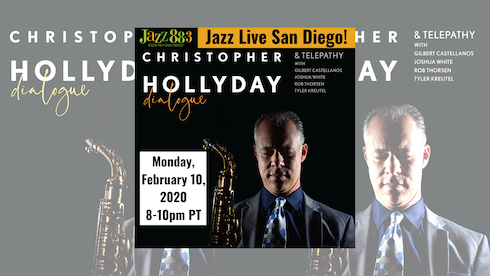February 18, 2020- Today's BHM topic is: Jazz at the Philharmonic
Jazz at the Philharmonic, or JATP, was a series of jazz concert tours and recordings produced by Norman Granz. JATP started in Los Angeles in 1944 and became the most successful jazz series of all time. Almost every great jazz artist from the forties and fifties were part of Granz’ stable of stars.
Granz was born in Los Angeles and became a jazz fan at an early age. He noticed injustices to the African American musicians who were his heroes and vowed to do something about it. He began staging organized jam sessions in 1942 at Billy Berg’s Trouville Club. He made sure that both the audience and the bandstand were racially integrated. He continued the jam sessions at a few other venues waiting for the right time to move to a larger space. That opportunity came in 1944.
Two years earlier there had been a murder that took place in Commerce, California near a swimming hole known as the Sleepy Lagoon. After a body was discovered the LAPD went into east Los Angeles and arrested 17 Mexican-American youths as suspects. There was no evidence but they were all held without bail on charges of murder.
The trial ended in January of 1943 with 12 of the young men convicted and sent to San Quentin. The other 5 were convicted of lessor offenses. It was obvious that the young men that were convicted likely had nothing to do with the murder and the public unrest led to the Zoot Suit riots that plagued east l.a. during the summer of 1943.
Concerned citizens formed the Sleepy Lagoon Defense Committee to try to help the convicted men. Norman Granz was outraged as well and decided to do a larger jam
session to raise money for the Sleepy Lagoon Defense Fund. He rented the Philharmonic Hall in downtown Los Angeles and held the first concert on July 2, 1944. The line up included Illinois Jacquet, Les Paul, Jack McVea, J.J. Johnson, Nat King Cole, Red Callendar and Lee Young among others. Because of the location it was called Jazz at the
Philharmonic.
The concept and the event was a huge success. By October they were able to get the case heard by the state court of appeals and the convictions were reversed. Granz didn’t stop there though. The momentum continued and led to more concerts and eventually nationwide tours. The Jazz at the Philharmonic name stuck. Many concerts were recorded and issued on Asch and Mercury. Granz became so successful that he eventually formed his own record companies Clef and Norgran and started issuing the recordings on his
own.
In 1956 he consolidated the two labels into Verve Records. Granz home base was an office in Beverly Hills. It was one of the biggest jazz enterprises of all time. He managed several artists such as Ella Fitzgerald and Oscar Peterson plus his record label recorded hundreds of classic albums. The JATP tours expanded to Europe in 1952 and
continued to be major successes.
In the sixties, Granz sold Verve, relocated to Europe and eventually retired the JATP tours. His crusade for civil rights resulted in many positives for the music business. He refused to allow segregation of any kind at his concerts and he made sure his artists were well paid and well treated.
In the early seventies, although happily retired, he recognized that many of his former artists such as Basie, Ella and Oscar had no record contracts.To remedy this he decided to start a new label which he called Pablo records.He followed his original pattern of tours and recordings to great success and rose to the top of the jazz world once again.


